Who is Kenji Kamiyama?
February 23, 2018 · 1 comment
By Andrew Osmond.
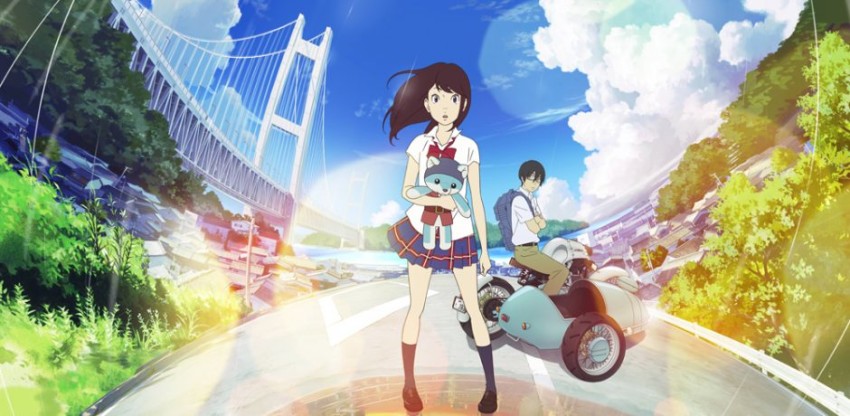 The name of Kenji Kamiyama, director of Napping Princess, is not as well-known to savvy mainstream critics as Miyazaki, Oshii or Satoshi Kon. One reason is that most of Kamiyama’s important work has been for television rather than cinema. But for anime fans, he’s been a big beast for fifteen years, for his epic stint on Ghost in the Shell: Stand Alone Complex and for later titles such as Eden of the East and Moribito: Guarden of the Spirit.
The name of Kenji Kamiyama, director of Napping Princess, is not as well-known to savvy mainstream critics as Miyazaki, Oshii or Satoshi Kon. One reason is that most of Kamiyama’s important work has been for television rather than cinema. But for anime fans, he’s been a big beast for fifteen years, for his epic stint on Ghost in the Shell: Stand Alone Complex and for later titles such as Eden of the East and Moribito: Guarden of the Spirit.
Kamiyama exemplifies successful succession. In his early career, he was a protégé of Mamoru Oshii, who turned Patlabor and Ghost in the Shell into acclaimed films in the 1990s. Oshii put his stamp so firmly on Ghost in the Shell, at least in anime, that it seemed impossible for any other creator to make a successful alternative version. And yet, nine years after Oshii’s Ghost, Kamiyama’s Stand Alone Complex did just that, making Kamiyama’s name.
The home of Ghost in the Shell is Production I.G, whose co-founder Mitsuhisa Ishikawa promotes the studio’s two best-known directors in mischievous ways. When I interviewed Ishikawa in 2012, the “I” of I.G. suggested that Oshii and Kamiyama were the Kenobi and Darth Vader of the anime industry – with Kamiyama, oddly enough, as Darth.
“In a lot of Japanese businesses and companies, you have a sort of master-student relationship,” Ishikawa said. “It started out with Kamiyama as the student under Oshii, he wanted to make the same kind of films as Oshii. So for the first part of his career, Kamiyama was the student. But now what we see is that they’re coming to be more of a rival relationship, more on the same level. Because with any master-student relationship, there has to be a time when the student exceeds the master. And what we’re seeing now is that they’re on the same level and it’s getting towards that point. That’s maybe how you should explain their relationship.”
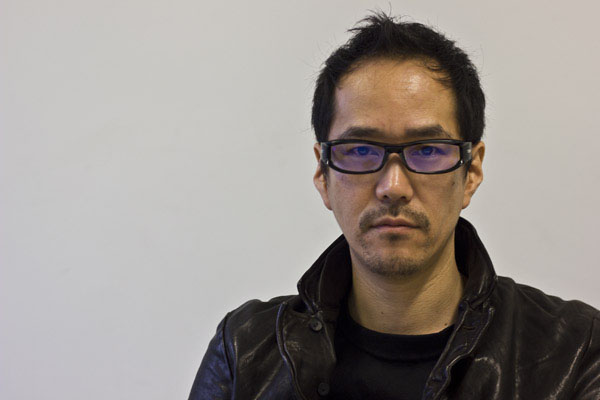 Born in 1966, Kamiyama grew up on the first Star Wars and Gundam. “I think everything started when I watched Star Wars as a kid and decided that was what I wanted to do in my life,” he told Madman Entertainment. “However, there was no way a live-action movie of that scale and quality could be made in Japan. Then, there was this new show on the telly called Mobile Suit Gundam. In terms of story and world setting it was as compelling as Star Wars, so I felt that animation could give me the opportunity to do what I wanted.”
Born in 1966, Kamiyama grew up on the first Star Wars and Gundam. “I think everything started when I watched Star Wars as a kid and decided that was what I wanted to do in my life,” he told Madman Entertainment. “However, there was no way a live-action movie of that scale and quality could be made in Japan. Then, there was this new show on the telly called Mobile Suit Gundam. In terms of story and world setting it was as compelling as Star Wars, so I felt that animation could give me the opportunity to do what I wanted.”
Kamiyama entered the anime industry in what some fans see as its golden age, the late 1980s. As a teenager, he joined Studio Fuga in 1985, an atelier specialising in backgrounds. (“Atelier,” the French word for “garret,” denotes the tiniest kind of anime studio.) His first credits included work on two huge anime, Otomo’s Akira and Miyazaki’s Kiki’s Delivery Service.
By 1996, the thirty-year old Kamiyama was working at Production I.G, specifically in Team Oshii, a study group formed by Oshii himself. According to Fred Patten, Oshii’s purpose was to gather “promising young animation writers, artists and filmmakers into a series of informal tutorial sessions to discuss how to go about creating a professional animation project.” These weren’t just classes to hone skills. I.G expected results, and Kamiyama found himself pulling all-nighters on top of his regular work to create plans for viable new anime.
Eventually, Kamiyama suggested a plot outline called “The Last Vampire”. This was merged with a character, the sword-wielding schoolgirl Saya created by another team member, Junichi Fujisaki. The result, Blood: The Last Vampire, was emphatically collaborative with Oshii himself shaping the plot, but Kamiyama is credited with the screenplay. Blood deals with the ageless Saya as she battles ravening monsters on an American air base that’s launching planes towards Vietnam in the 1960s. While the setting was suggested by Ishikawa, it’s the kind of politically-loaded scenario which recurs in Kamiyama’s work.
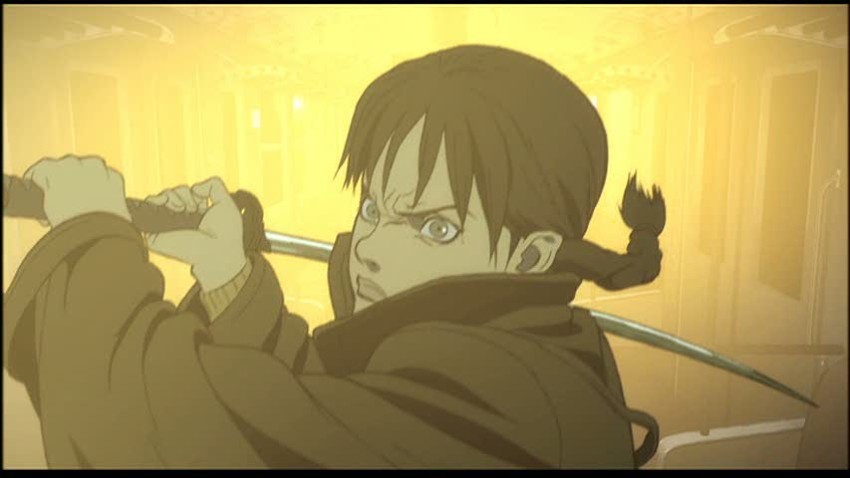 Released in 2000, Blood: The Last Vampire would be reworked several times by Production I.G. (2012’s Blood-C: The Last Dark, would be a training ground for Naoyoshi Shiotani, who’d helm the Psycho-Pass franchise.) Kamiyama, though, wouldn’t return to Saya, though he had the dubious honour of being credited “Original Creator” on the dire live-action Blood remake in 2009. By then, though, he’d made a different franchise his own.
Released in 2000, Blood: The Last Vampire would be reworked several times by Production I.G. (2012’s Blood-C: The Last Dark, would be a training ground for Naoyoshi Shiotani, who’d helm the Psycho-Pass franchise.) Kamiyama, though, wouldn’t return to Saya, though he had the dubious honour of being credited “Original Creator” on the dire live-action Blood remake in 2009. By then, though, he’d made a different franchise his own.
In 2002, Kamiyama was put in charge of a new version of I.G’s most famous title, Ghost in the Shell. It was lavish; the channel Animax invested 800 million yen in the first 26-part series. Stand Alone Compex was a reboot before the word was Hollywood parlance, and most professionals would have seen it as a noxiously poisoned chalice. Imagine, being charged to make something that would be instantly compared to the work of Oshii and Ghost in the Shell’s manga writer, Masumune Shirow.
But Kamiyama took it on and triumphed. Stand Alone Complex is the most outstanding reboot of a property in animation since Batman: The Animated Series a decade earlier in America. The two series have some points in common. Both humanise their characters, giving them warmth and humour after the abstract intellectualism of Oshii or (on Batman’s side) the grandstanding garishness of Tim Burton.
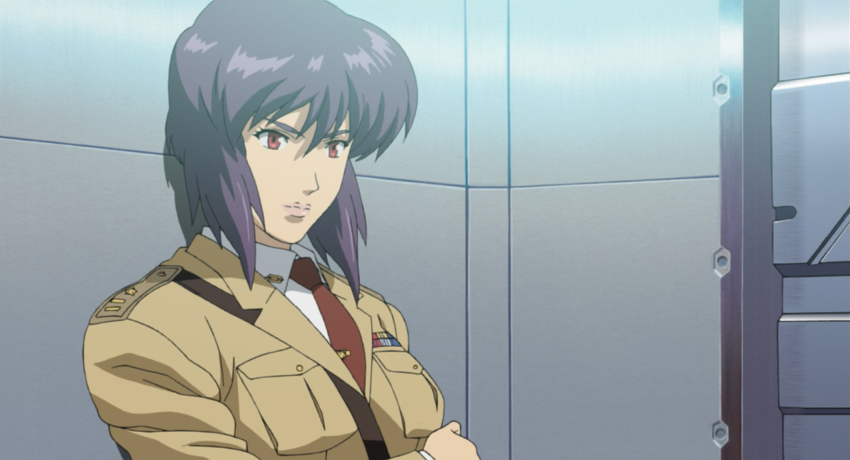
The first episodes of Stand Alone Complex offer breathless, whizzy adventure stories, such as a sentient tank being chased down a freeway by the squeaky, insectile Tachikoma robots allied to the heroes. (The Tachikoma were based on robots in Shirow’s manga; Oshii had cut them from his own film for being too cute.) Yet Complex was hardly dumbing down. The very next episode (“Android and I”) had characters who speak almost entirely in quotes from Jean-Luc Godard’s Breathless. A later episode is based round a debate in a cyberspace chatroom where the brain-linked participants can meet in “person.”
Of course, Stand Alone Complex was another team effort. The extraordinary music by Yoko Kanno, set the show apart instantly from the Oshii films scored by Kenji Kawai (who would score Kamiyama’s Moribito, Eden of the East and 009: Re Cyborg). The 3D Director was Makoto Endo, who’d stay with Kamiyama on Moribito and Eden of the East. Stand Alone Complex also had multiple writers, such as Yoshiki Sakurai (interview) who wrote the “Breathless” episode. But the arc stories, involving sympathetic adversaries such as the Laughing Man and Kuze, came from Kamiyama’s own leanings.
One of Stand Alone Complex’s main motifs is J. D. Salinger’s novel Catcher in the Rye. It’s not referenced in Shirow’s or Oshii’s Ghosts – it’s all Kamiyama. “From when I was seventeen until I was twenty-four, I felt that I was Holden Caulfield, the main character in Catcher in the Rye,” Kamiyama told me in 2010. “I was also inspired by Yukio Mishima’s way of thinking, and by an incident in Japan in 1960 [before Kamiyama’s birth].” This incident was a political assassination, when a teen boy and right-wing zealot called Otoya Yamaguchi fatally stabbed Inejiro Asanuma, head of the Japan Socialist party.
Kamiyama said, “I was impressed by the fact that these two people, Yamaguchi and Asanuma, belonged to opposite political factions, but they had the same purpose. They were both strongly patriotic and the fact they couldn’t communicate with each other was in a way symbolic of the very hard situation in 1960s Japan… Rather than just say that the boy was a terrorist, there was more to learn about the reasons which caused this incident. I took inspiration from it for the Laughing Man and Kuze. Both are people who are trying to do good, but who are seen as terrorists.”
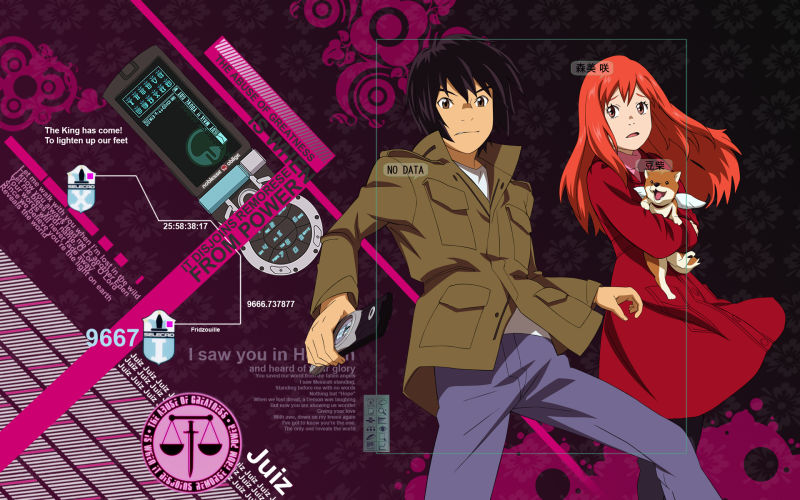 This motif extended to one of Kamiyama’s main works after Complex. In Eden of the East, twelve characters, including Eden’s daffy amnesiac hero, are given the opportunity to remake Japan by whatever means they choose. The show opens with a missile attack on Tokyo; Eden is as much about the reactions of disaffected Japanese youngsters to terrorism.
This motif extended to one of Kamiyama’s main works after Complex. In Eden of the East, twelve characters, including Eden’s daffy amnesiac hero, are given the opportunity to remake Japan by whatever means they choose. The show opens with a missile attack on Tokyo; Eden is as much about the reactions of disaffected Japanese youngsters to terrorism.
“In the age before Japan saw economic growth, people did not anticipate that material wealth would lead to unhappiness,” Kamiyama said. “But in reality, people in modern Japan, especially the young, don’t really feel, ‘I am rich, so I’m happy’. People measure happiness by comparing their own situations to those of others, and that is a deformed kind of happiness. Consequently, people cannot feel the motivation to work, and they can’t really reach contentment.”
Eden of the East links this malaise to the rise of drop-outs, the so-called NEETs, in Japan. “Because these people have no excitement or passion in their lives, their lives themselves become flat,” said Kamiyama. “So secretly, they start to wish that something exciting or surprising will happen, whether good or bad, so that they can feel they are alive.”
The 11-part Eden of the East TV series is an action-comedy-thriller. It borrows liberally from The Bourne Identity, which Kamiyama loves; he also cited “the idea of having a big mystery in which the hero is involved but he doesn’t know why, as used by Hitchcock”. (Hitch perfected the template in his 1959 comedy-thriller North by Northwest.) Eden continued in two cinema sequels, subtitled King of Eden and Paradise Lost. By the second film, Eden moved away from comedy-thriller to become a straighter political drama, almost like something Oshii might have done.
Kamiyama agrees Eden parallels his mentor’s work. “Oshii is the other great part of my inspiration,” he says, putting Oshii beside Mishima and Holden Caulfield. “He is why I started to be a director myself. In Eden, I wasn’t specifically inspired by Oshii, but after I made the series, there were people saying that it looked like my interpretation of some themes taken up by Oshii in Patlabor 2. So I realised there was probably something inside me, but it wasn’t a specific inspiration; I didn’t have it in mind.”
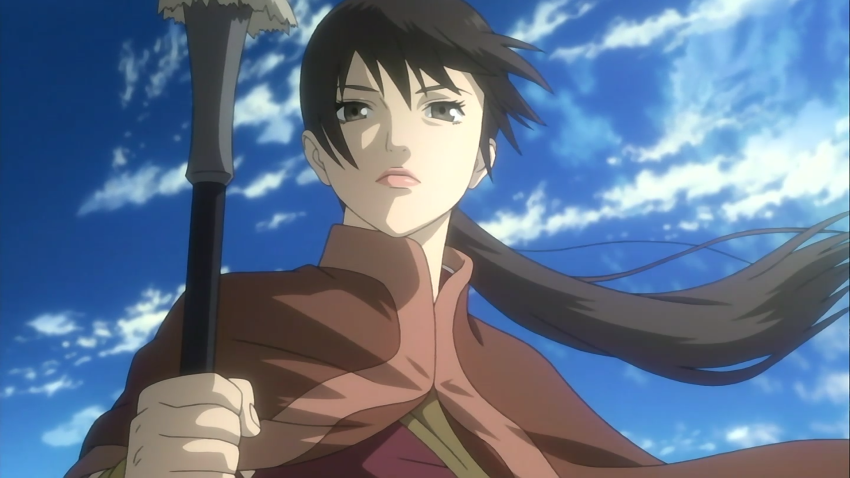 Between Stand Alone Complex and Eden of the East, Kamiyama also directed another lavish TV series, Moribito: Guardian of the Spirit. Unlike many anime fantasies, the 26-part series feels thoroughly Asian, from its paddy field scenery to its codes of honour and self-denial respected by characters across the social classes. It was based on a novel (by Naohoko Uehashi), but Ishikawa told me it tied to Kamiyama’s work through its central figure, a spear-carrying woman bodyguard called Balsa.
Between Stand Alone Complex and Eden of the East, Kamiyama also directed another lavish TV series, Moribito: Guardian of the Spirit. Unlike many anime fantasies, the 26-part series feels thoroughly Asian, from its paddy field scenery to its codes of honour and self-denial respected by characters across the social classes. It was based on a novel (by Naohoko Uehashi), but Ishikawa told me it tied to Kamiyama’s work through its central figure, a spear-carrying woman bodyguard called Balsa.
“In Kamiyama’s version, Balsa is very similar to Major Kusanagi in Stand Alone Complex, effectively extending the same female character,” Ishikawa said. However, this “Kusanagi” has an enchanting relationship with the boy prince she protects, which is explored through fights, flashback revelations and a child’s passage to adulthood. Moribito’s world feels as detailed as the future Japan of Stand Alone Complex, but with more in-built mystery. The story emphasises forgotten knowledge, hidden tribes and lost traditions.
More recently, Kamiyama has been involved in two reworkings of Cyborg 009, a manga first created by Shotaro Ishinomori in the 1960s. Kamiyama directed and wrote 009: Re Cyborg, which has the most provocative imagery of any Kamiyama film. It starts with a series of 9/11-style terror attacks, though the director denied he has a radical political agenda. Interviewed on Production I.G’s website, though, Kamiyama said he reduced the fantasy of the original strip “and introduced more serious and modern political issues” – the approach of iconic 1980s superhero strips like Watchmen and The Dark Knight Returns.
Kamiyama was also the credited Chief Director on Cyborg 009 Dawn of Justice, released as a three-part film and a twelve-part series, though its actual director was Koudai Kakimoto, a unit director on the previous film. Dawn of Justice involved Signal.MD, a new studio created by Production I.G’s parent company, IG Port. It was Signal.MD that would animate Kamiyama’s new family film Napping Princess, aka Ancien and the Magic Tablet.
But Kamiyama’s next project has already been announced by Production I.G. It will be another Ghost in the Shell anime, which Kamiyama will co-direct with Shinji Aramaki, who’s helmed CG versions of Appleseed and Captain Harlock. So far, the format and release date haven’t been revealed, nor the top concern of many fans – whether this new Ghost will continue the Stand Alone Complex continuity that’s been mothballed since 2006. Is Kamiyama coming home, or striking out in a whole new direction?
Andrew Osmond is the author of 100 Animated Feature Films.
anime, Blood: The Last Vampire, Eden of the East, ghost in the shell, Japan, kenji kamiyama, Napping Princess
withoutla
February 24, 2018 9:39 am
Great summary! This is a perfect guide about Kenji Kamiyama's careers before "Napping Princess" In addition to this, Kamiyama made a draft "Shin Godzilla" with Hideaki Anno until "Napping Princess" project started. As written, Kamiyama with Shinji Aramaki work on new project "ULTRAMAN" and, of course, new "Ghost in the Shell". In latest interview, directors said new "Ghost in the Shell" would be made by 3DCG, particularly motion capture.